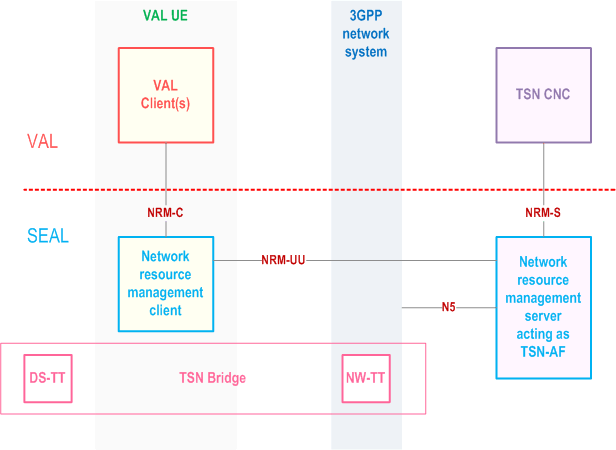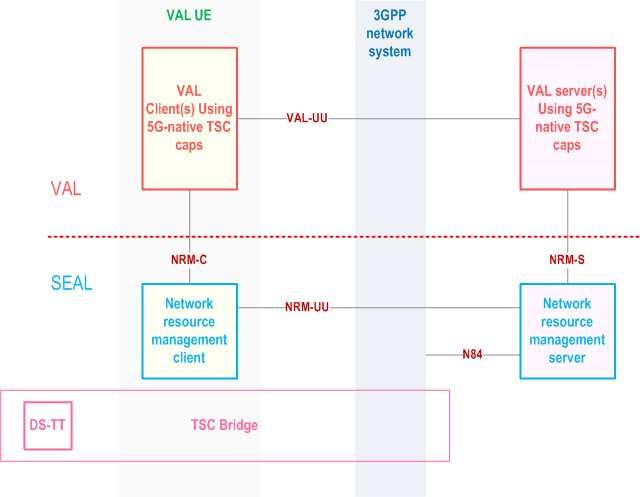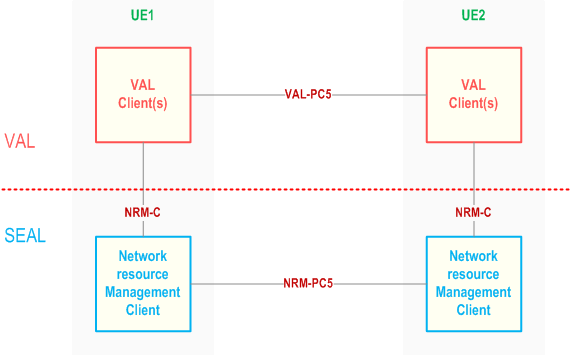Content for TS 23.434 Word version: 19.2.0
0…
4…
5
6…
6.4…
6.5…
6.5.3…
7…
8…
8.2.2…
9…
9.3…
9.3.2.21…
9.3.3…
9.3.6…
9.3.11…
9.3.13…
9.3.14…
9.4…
9.4.6…
9.5…
10…
10.3…
10.3.2.22…
10.3.3…
10.3.7…
10.3.10…
10.4…
11…
11.3…
11.3.3…
11.4…
12…
12.3…
13…
14…
14.2.2.2…
14.3…
14.3.2.20…
14.3.2.40…
14.3.3…
14.3.3.3…
14.3.4…
14.3.4.6
14.3.4.7…
14.3.4A…
14.3.4A.3…
14.3.4A.4…
14.3.4A.6…
14.3.4A.8…
14.3.4A.9…
14.3.4A.10…
14.3.5…
14.3.6…
14.3.9…
14.3.12…
14.4…
15…
16…
17…
18…
A
B…
14.2.2.2 On-network functional model for network resource management for TSN
14.2.2.3 On-network functional model for network resource management for 5G TSC
14.2.3 Off-network functional model description
14.2.4 Functional entities description
14.2.4.1 General
14.2.4.2 Network resource management client
14.2.4.3 Network resource management server
14.2.5 Reference points description
14.2.5.1 General
14.2.5.2 NRM-UU
14.2.5.3 NRM-PC5
14.2.5.4 NRM-C
14.2.5.5 NRM-S
14.2.5.6 NRM-E
14.2.5.7 MB2-C
14.2.5.8 xMB-C
14.2.5.9 Rx
14.2.5.10 N5
14.2.5.11 N33
14.2.5.12 Nmb13
14.2.5.13 Nmb10
14.2.5.14 N6mb
14.2.5.15 Nmb8
14.2.5.16 N6
...
...
14.2.2.2 On-network functional model for network resource management for TSN |R17| p. 162
The architecture for integration of the 5G with TSN [36] is depicted in Figure 14.2.2.2-1. The SEAL Network Resource Management (NRM) server acts as a TSN AF (defined in clause 5.28.1 of TS 23.501). TSN CNC (defined in [35]) via the NRM-S reference point configures the TSN flows in the 5GS. In this case the NRM-S supports the IEEE 802.1Qcc management protocol. As a TSN AF the SEAL NRM server interacts with the 5GS PCF over the N5 reference point to configure the 5G QoS and TSCAI parameters in the 5GS.

Acting as the TSN AF the NRM server collects 5GS TSN Bridge information by interaction with the 5GS via the N5 reference point, as described in in TS 23.502 Annex F.1.
NRM server triggers via N5 the AF request procedure as described in TS 23.502 Annex F.2.
14.2.2.3 On-network functional model for network resource management for 5G TSC |R17| p. 163
5G TSC refers to time sensitive communication service offered within the 5G system (i.e. without integration with a TSN system) by the 5GS for the UEs connected to the 5GS. The architecture for the 5G TSC is depicted in Figure 14.2.2.3-1. The SEAL NRM server acts as an AF towards the 5G Core Network and performs coordination of QoS flows to fulfill the end-to-end QoS requirements for the UEs involved in the TSC communication. It combines the roles of TSCTSF and TSC CNC (similar to the TSN CNC in the TSN integration case), which means that it controls the allocation of resources of TSC communication within the boundaries of the 5G domain.
Upon request from a VAL server via the NRM-S reference point it configures the TSC end-to-end QoS flows in the 5GS. In line with other SEAL service enablers the SEAL NRM server provides a RESTful interface on the NRM-S reference point. As a TSCTSF the SEAL NRM server interacts with the 5GS PCF over the N84 reference point to configure the 5G QoS and TSCAI parameters in the 5GS.

14.2.3 Off-network functional model description p. 164
Figure 14.2.3-1 illustrates the off-network functional model for network resource management.

The network resource management client of the UE1 communicates with the network resource management client of the UE2 over the NRM-PC5 reference point.
14.2.4 Functional entities description p. 164
14.2.4.1 General p. 164
The functional entities for network resource management SEAL service are described in the following subclauses.
14.2.4.2 Network resource management client p. 164
The network resource management client functional entity acts as the application client for the management of network resources. The network resource management client interacts with the network resource management server.
14.2.4.3 Network resource management server p. 165
The network resource management server functional entity provides for management of 3GPP system network resources (e.g. unicast, multicast) and monitoring events to support the VAL applications. The network resource management server acts as CAPIF's API exposing function as specified in TS 23.222. The network resource management server also supports interactions with the corresponding network resource management server in distributed SEAL deployments. The NRM server's role may be assumed by the VAL server in some deployments, in which case, the VAL server performs the procedures for network resource management of the NRM server.
14.2.5 Reference points description p. 165
14.2.5.1 General p. 165
The reference points for the functional model for network resource management are described in the following subclauses.
14.2.5.2 NRM-UU p. 165
The interactions related to network resource management functions between the network resource management client and the network resource management server are supported by NRM-UU reference point. This reference point utilizes Uu reference point as described in TS 23.401 and TS 23.501.
14.2.5.3 NRM-PC5 p. 165
The interactions related to network resource management functions between the network resource management clients located in different VAL UEs are supported by the NRM-PC5 reference point. This reference point utilizes PC5 reference point as described in TS 23.303.
14.2.5.4 NRM-C p. 165
The interactions related to network resource management functions between the VAL client(s) and the network resource management client within a VAL UE are supported by the NRM-C reference point.
14.2.5.5 NRM-S p. 165
The interactions related to network resource management functions between the VAL server(s) and the network resource management server are supported by the NRM-S reference point. This reference point is an instance of CAPIF-2 reference point as specified in TS 23.222.
14.2.5.6 NRM-E p. 165
The interactions related to network resource management functions between the network resource management servers in a distributed deployment are supported by NRM-E reference point.
14.2.5.7 MB2-C p. 165
The reference point MB2-C supports the control plane interactions between the network resource management server and the BM-SC and is specified in TS 29.468.
14.2.5.8 xMB-C p. 165
The reference point xMB-C supports the control plane interactions between the network resource management server and the BM-SC and is specified in TS 26.348.
14.2.5.9 Rx p. 166
The reference point Rx supports the interactions between the network resource management server and the PCRF and is specified in TS 29.214.
14.2.5.10 N5 p. 166
The reference point N5 supports the interactions between the network resource management server and the PCF and is specified in TS 23.501.
14.2.5.11 N33 |R17| p. 166
The reference point N33 supports the interactions between the network resource management server and the NEF and is specified in TS 23.501.
14.2.5.12 Nmb13 |R18| p. 166
The reference point Nmb13 supports the interactions between the network resource management server and the MB-SMF is specified in TS 23.247.
14.2.5.13 Nmb10 |R18| p. 166
The reference point Nmb10 supports the interactions between the network resource management server and the MBSF is specified in TS 23.247.
14.2.5.14 N6mb |R18| p. 166
The reference point N6mb supports the interactions between the VAL server and the MB-UPF is specified in TS 23.247.
14.2.5.15 Nmb8 |R18| p. 166
The reference point Nmb8 supports the interactions between the VAL server and the MBSTF is specified in TS 23.247.
14.2.5.16 N6 |R18| p. 166
The reference point N6 supports the interactions between the VAL server and the UPF is specified in TS 23.501.